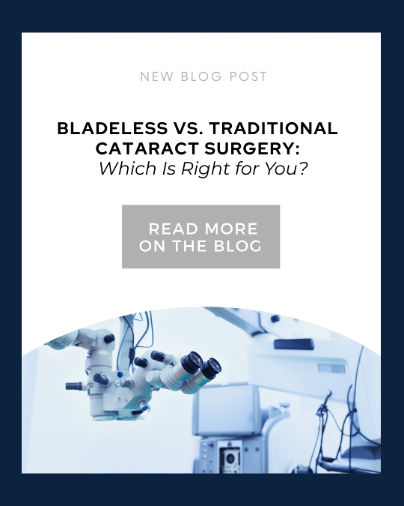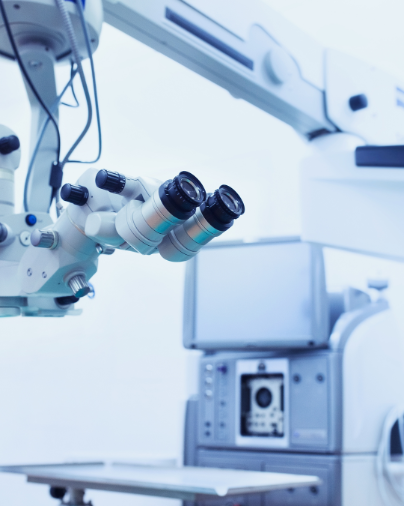Posted by: SightTrust Eye Institute in Cataracts


Cataract surgery is one of the safest and most common procedures performed today, with millions of people regaining clear vision each year. But advancements in technology mean you now have options—most notably, whether to choose traditional cataract surgery or bladeless, laser-assisted cataract surgery. Understanding the differences can help you make an informed decision about your eye health.
Traditional Cataract Surgery
How it works:
- The surgeon makes a cut in your eye using a steel blade.
- Ultrasound is used to break up the cloudy lens; this is like a microscopic jackhammer.
- The lens fragments are removed with suction.
- A new, “standard” lens implant is placed in your eye.
Pros:
- This technology has been used for decades.
- Usually covered by insurance.
Cona:
- This technique creates more swelling, on average.
- Not as precise as laser technology.
- Glasses are still needed after surgery for distance and reading
Bladeless (Laser-Assisted) Cataract Surgery
How it works:
- A laser, guided by detailed imaging, makes all the incisions.
- The laser also softens the cataract so it’s easier to remove.
- The new lens can be placed with even more accuracy.
Pros:
- More precise and accurate than a blade.
- Customized to your eyes.
- Combined with premium lenses, reduces or eliminates your need for glasses.
- Gentler on your eye, quicker healing.
Things to know:
- Laser is not covered by insurance.
Why the Technology Matters
While both methods can restore your vision, laser technology makes the process more precise and allows for premium lens technology to keep you out of glasses after surgery.
At SightTrust, we specialize in premium laser and lens surgery to reinvigorate your vision. We will guide you through your options to make you feel confident in your decision. Dr. Shatz uses the latest technology to make sure your surgery is as safe, comfortable, and effective as possible.
Ready to see clearly again? Contact us to schedule your cataract consultation today!






